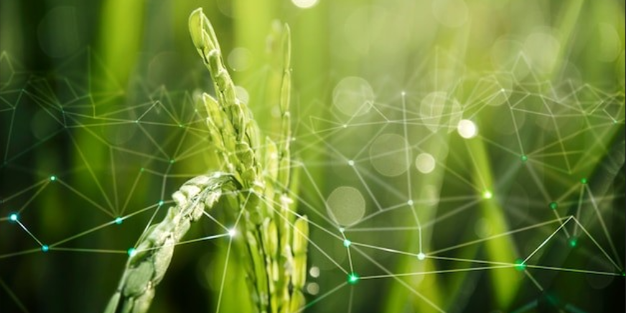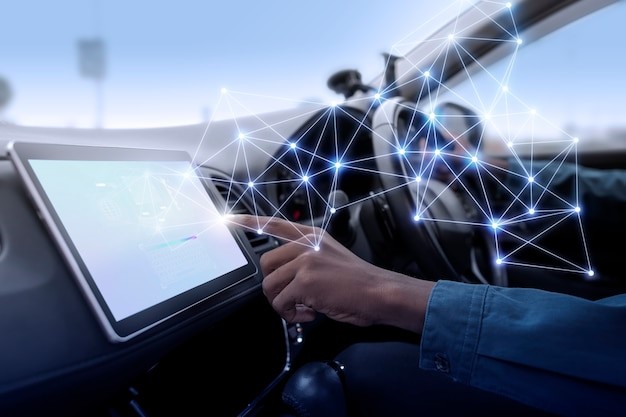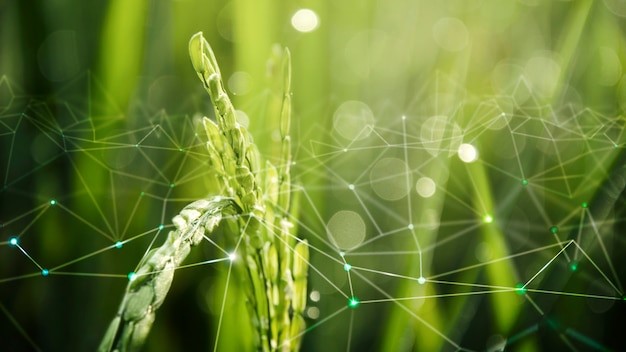
Computer vision is a subfield of artificial intelligence (AI) based on the intersection of AI and digital imaging. It allows computers to interpret and understand visual information from the world.
With complex algorithms and machine learning models, computers are able to "see" and "comprehend". They process and analyze images as well as videos to identify objects and detect changes over time.
Computer vision requires a large amount of data to make it work more effectively. To develop an advanced computer vision system, computer vision datasets are an important start.
By simulating the human visual system, it involves several computational processes, such as image processing, feature extraction, image classification, object detection, and semantic segmentation.
As a promising branch of AI, computer vision naturally offers a myriad of benefits.
1. Enhanced Efficiency: Computer vision technology enhances the level of automation in diverse industries. In manufacturing, it reduces production time; while in logistics, it can streamline sorting and packing, resulting in a more efficient supply chain.
2. Improved Safety and Security: Another obvious benefit is improved safety and security. Surveillance systems with computer vision technology can monitor public spaces and workplaces, detect potential threats, and alert authorities promptly.
As for the automotive industry, computer vision aids the development of advanced driver-assistance systems (ADAS), as it can significantly reduce the risk of accidents.
3. Better Cost-reduction: Companies do not have to spend money on fixing their flawed processes because computer vision will leave no room for faulty products and services. It carries out services at a simpler and faster process, so that can highly reduce spending.
As you may have an abstract idea about how computer vision works, this part will continue telling you the core functions of computer vision.
Image classification involves grouping objects into different categories, just like how humans do. It assigns a label to an entire image based on its visual content.
This process uses machine learning algorithms, specifically deep neural networks, to learn from vast datasets and accurately identify patterns. The ability is useful in several applications, such as content moderation in social media or improving user experience in image-based search engines.
Object detection is more advanced as it locates and identifies specific objects in an image. Unlike classification, this function pinpoints multiple objects and represents their exact positions by bounding boxes.
For instance, in retail inventory management, object detection can automate the process of identifying and counting items on store shelves.
Object tracking focuses on following the movement of one or more objects over time within a video sequence. That's why it is an extension of object detection.
This function is essential for understanding the behavior and trajectory of objects, providing a temporal dimension to visual analysis.
Object tracking finds its application in many areas, such as surveillance systems for monitoring suspicious activities and sports analytics to track players' movements and performance.
Semantic segmentation refers to the most detailed image analysis. Its primary goal is to classify each pixel in an image into a specific class. This function enhances object detection by providing a comprehensive understanding of an image's content.
For instance, in a street scene, semantic segmentation would not only identify the vehicles and pedestrians but also distinguish between the road, sidewalk, buildings, and other elements.
In real-world scenarios, the advent of computer vision has explored a large amount of new possibilities for us. To get a quick look, here are some applications of computer vision in different fields.
1. X-ray and MRI Analysis
Thanks to machine learning algorithms, computer vision systems can assist radiologists in identifying subtle abnormalities that may be easily overlooked by the human eye.
This not only enhances the diagnostic process but also helps in reducing the workload of medical professionals. Computer vision facilitates the creation of three-dimensional models from two-dimensional scans, providing a more comprehensive view of the patient's anatomy. This enables surgeons to visualize and understand the complexities of the patient's condition.
2. Cancer Detection
Computer vision algorithms can analyze images from various modalities to detect patterns and changes that may indicate cancerous growth at an early stage.
The technology is particularly useful in detecting breast cancer through mammograms. It expedites the diagnostic process and helps in reducing unnecessary biopsies.
3. Digital Pathology
Computer vision is making much progress in digital pathology. With the help of advanced computer vision algorithms, this technology can convert tissue slides into digital images, making it possible to detect even subtle morphological changes related to different diseases.
What's more, digital pathology enables the sharing and collaboration of images among experts worldwide, creating a more connected and efficient diagnostic network.
1. Defect Inspection
This process uses advanced imaging technology and machine learning algorithms to identify and categorize defects in products.
Computer vision systems can analyze products more accurately and at a faster rate than manual inspection, reducing the probability of faulty items passing through quality control. By automating the defect detection process, manufacturers can maintain high-quality standards consistently and efficiently.
2. Reading Text and Barcodes
Computer vision can assist in reading text and decoding barcodes or QR codes on products. This feature is vital for managing inventory, tracking products along the supply chain, and ensuring accurate packaging and delivery.
Integrating computer vision systems into their operations can help manufacturers significantly reduce human errors in reading and interpreting codes.
At the same time, this technology can also be used to verify product information, such as expiration dates or batch numbers.
3. Product Assembly
In product assembly, computer vision guides robots and automated systems in placing and manipulating components accurately. The incorporation of computer vision into product assembly lines increases efficiency and flexibility.
By providing real-time visual feedback, computer vision systems help the robots adjust their movements based on the actual positions of the parts. This technology is particularly useful in environments where products have complex assembly requirements or where the manufacturing process needs to be highly adaptable to accommodate frequent design changes.
1. Self-checkout Systems
Self-checkout systems are being used more and more in supermarkets and stores all over the world. These systems rely on computer vision technology to recognize and handle items without the need for a cashier, providing customers with a more independent shopping experience.By using barcode scanners and weight sensors, combined with computer vision algorithms, these systems can accurately identify products, calculate the total cost of the purchase, and facilitate payment transactions.
2. Inventory Management
Computer vision provides retailers with a more accurate and efficient way to track stock levels.Through cameras and image recognition, retailers can monitor their shelves in real-time and identify items that are running low or out of stock. This approach to inventory management allows for timely restocking, reducing the risk of lost sales.
In addition, computer vision can help categorize and organize products in warehouses, facilitating the picking process and ensuring that orders are fulfilled promptly.
3. Foot Traffic Analysis
Retailers who want to optimize their sales strategies and store layouts must first understand customer behavior and in-store dynamics. This is where computer vision applications in foot traffic analysis come in handy. By analyzing video footage, retailers can gain insights into customer movement patterns and in-store interactions.
This allows them to identify high-traffic areas, popular product displays, and points of potential congestion. These data are helpful for retailers to make informed decisions about store layout, product placement, and promotional strategies.
1. Autonomous Cars
Self-driving cars heavily rely on computer vision to navigate and make real-time decisions on the road. Market giants like Tesla have made some progress in this field.
After learning autonomous driving data, autonomous cars can either be driven manually or make decisions by themselves. Computer vision algorithms smartly process visual data to identify other vehicles, pedestrians, and traffic signs, enabling the car to operate autonomously.

2. Pedestrian Detection
Pedestrian detection systems use cameras and sensors to identify and track individuals near or on the road. In any emergency, they can provide advanced warnings to drivers and take proactive braking measures.
In self-driving cars, pedestrian detection is particularly vital, as it allows the vehicle to identify pedestrians and avoid collisions. Also beneficial in urban areas with high foot traffic, it can be integrated into traffic light systems to improve pedestrian safety.
3. Road Condition Monitoring
Computer vision applications in road condition monitoring involve using cameras and image analysis to assess the state of roads, bridges, and other infrastructure. By detecting potholes, cracks, and other signs of wear, they can alert authorities to needed repairs, helping to prevent accidents and plan maintenance more effectively.
Additionally, real-time monitoring provides important data for traffic management, allowing for adjustments in traffic flow to avoid congestion and potential hazards.
Modern agriculture employs more and more advanced technology to increase productivity.
1. Crop and Yield Monitoring
Farmers capture images of their fields with satellites or ground-based sensors. Sophisticated algorithms then analyze these images to assess plant health and estimate yield.
This technology enables farmers to make data-driven decisions, optimizing irrigation, fertilization, and harvesting schedules.
2. Automatic Weeding
Weeds pose a significant challenge in agriculture, while computer vision has facilitated the development of automatic weeding systems. This technology captures images of the crop rows and differentiates between crops and weeds based on their visual characteristics.
Once identified, the system will apply targeted treatments to control weed growth without harming the crops. This not only reduces the use of harmful herbicides but also increases crop yield.
3. Plant Disease Detection
Computer vision does help a lot in the early identification of plant diseases by analyzing images of crops for signs of infection.
It can recognize patterns, discoloration, and other symptoms indicative of disease, so that can alert farmers to potential problems before they become widespread. This timely intervention can help prevent significant crop loss and reduce the overall impact of diseases on agricultural yields.

Actually, in addition to the popular applications listed above, one can find more potential and advanced use of computer vision.
1. Augmented and Mixed Reality
Augmented reality (AR) and mixed reality (MR) can enhance user interactions and provide immersive experiences.
Computer vision is important in improving AR and MR experiences. Computer vision algorithms are used to track the user's movements and integrate virtual elements in real-time, allowing for applications in education, gaming, interior design, etc.
2. Interactive Entertainment
The entertainment industry is making great transformation with the integration of computer vision. Interactive entertainment systems use computer vision to create more dynamic and adaptive experiences.
From motion-sensing gaming consoles that respond to player movements to virtual reality environments blending the digital and physical worlds, computer vision is the key factor in making entertainment more engaging and immersive.
3. Sports
Computer vision also explores many different usages in sports. The system can use cameras to analyze players' movements during games and provide data like speed and distance.
Also, cameras use pose estimation to track the motion of the human skeleton without using traditional ways. With this, players cannot be burdened with additional performance capture attire or devices.
Successful facial detection relies on deep learning and machine vision. Facial recognition systems have become increasingly sophisticated, thanks to advancements in computer vision. These systems are now capable of accurately identifying individuals in crowded public spaces, accessing secure facilities, and even unlocking personal devices. Training a sophisticated facial recognition system needs to collect extensive face datasets, so that the system can run effectively.
Data privacy and security is the unbreakable line. It must be transparent with users about what data is collected, how it is used, and the purpose. By doing so, it can build trust and maintain ethical standards.
Organizations must comply with data protection regulations, such as the General Data Protection Regulation (GDPR), to safeguard personal information.
To ensure seamless operations, successful integration of computer vision technologies with existing systems is necessary.
A well-planned integration leads to minimal disruption to existing workflows and maximizes the benefits of the new technology.
By maintaining high standards of accuracy and reliability, computer vision systems can deliver trustworthy results and contribute to decision-making processes.
In terms of this, training the system with diverse and multimodal datasets to minimize errors and biases is definitely critical.
Computer vision serves as an outstanding example to the astonishing power of artificial intelligence. It unleashes new possibilities, making tasks more automated, intelligent, and precise.
As the great technology comes, we also need to make sure that the technology is developed and deployed responsibly. When we embrace the bright future, let us do so to create a better tomorrow.